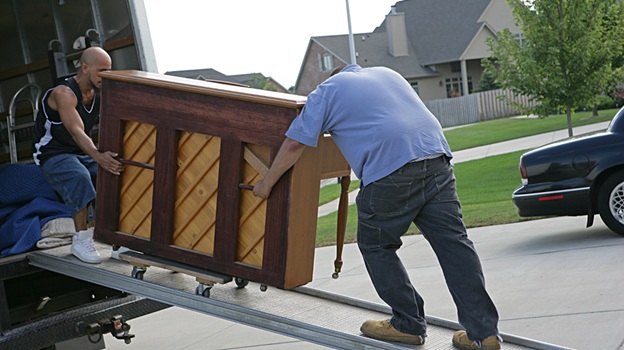
Moving a piano is not like moving an ordinary piece of furniture. These instruments are heavy, delicate, and finely engineered, with thousands of intricate parts that can be thrown off balance with the slightest bump or twist. While both grand and upright pianos present unique challenges, the process of transporting them safely requires careful preparation, specialized equipment, and expert handling. Understanding the differences between moving a grand piano and an upright piano can help you appreciate the expertise that goes into keeping these instruments secure during a move.
The Weight and Size Challenge
One of the most obvious differences between grand and upright pianos is their shape and size. Upright pianos, although tall, have a more compact form that makes them easier to maneuver through doorways and hallways. Most uprights weigh between 400 and 800 pounds, which still demands significant strength and coordination to move.
Grand pianos, on the other hand, can weigh anywhere from 500 pounds for smaller baby grands to over 1,200 pounds for concert grands. Their sprawling horizontal design, with the wide keyboard and long soundboard, makes them far more awkward to lift and position. The sheer bulk of a grand means that extra manpower and precise strategy are essential.
Preparing the Piano
Preparation is crucial before a single strap is buckled or dolly is rolled out. Both upright and grand pianos need to be carefully protected from scratches, bumps, and environmental factors. Movers typically start by wrapping the instrument in thick moving blankets and securing them with tape or straps.
For uprights, this usually means ensuring the keyboard lid is shut, pedals are padded, and every corner is wrapped tightly. For grands, the process is more complex: the lid is closed and locked, the legs are carefully detached, and the pedal lyre may be removed as well. Each piece is wrapped individually before being loaded. This not only reduces the risk of damage but also makes the piano easier to handle in sections.
Tools of the Trade
Specialized equipment is another factor that separates safe piano moving from an ordinary moving job. Upright pianos often require heavy-duty dollies that can support their weight and allow them to be rolled carefully across floors. Thick straps and skid boards are used to stabilize the piano during lifting and transport.
Grand pianos, however, require a piano board—sometimes called a skid board. After the legs and pedals are removed, the body of the grand is gently tilted onto its side and secured to the board with straps. This method provides stability and reduces the chance of the piano twisting during the move. Once secured, movers can guide the piano safely through tight spaces and onto a dolly for transport.
Navigating Spaces and Obstacles
Both upright and grand pianos can present major logistical challenges depending on the environment. Narrow staircases, sharp corners, or uneven terrain can turn a routine move into a complex operation. Upright pianos, with their vertical build, may be easier to pivot through doorways, but their tall profile can make staircases tricky.
Grand pianos often require more space clearance. The instrument may need to be tilted or rotated in unusual ways to navigate doorways and hallways. This is where having multiple trained movers is crucial: each person plays a role in balancing the weight, protecting the instrument, and avoiding damage to walls and floors.
Protecting the Instrument’s Integrity
Beyond the physical move, attention must be paid to the piano’s internal integrity. Pianos are sensitive to changes in temperature and humidity, and the jostling of a move can affect the delicate tuning pins, strings, and soundboard. Even when moved with extreme care, a piano will often require tuning once it is in its new home.
Professional movers know how to minimize stress on the instrument, ensuring that pedals, keys, and inner components are not damaged. For grands, carefully handling the detached legs and reassembling them securely is just as important as transporting the body itself.
Attempting to move a piano without proper knowledge or equipment is risky. Beyond the possibility of damaging the instrument, there is also a serious risk of injury. Pianos are incredibly heavy and awkwardly balanced, and one misstep can lead to falls or strained muscles.
This is why professional piano moving is so valuable. Experienced movers are trained to assess the layout of a home, plan the safest route, and use the correct equipment for each type of piano. Their expertise ensures not only the safety of the instrument but also the safety of everyone involved in the move.
After the Move
Once the piano is in its new location, the process is not entirely finished. Upright and grand pianos alike need time to acclimate to their new environment. Temperature and humidity shifts can cause slight changes in tension across the strings and affect the action of the keys. Most technicians recommend waiting a few weeks before scheduling a tuning, allowing the piano to settle into the space.
Moving a piano is a specialized task that goes far beyond lifting and carrying. The differences between grand and upright pianos—whether in size, weight, or assembly—demand unique strategies and equipment. From disassembling and securing a grand to stabilizing and maneuvering an upright, each step must be handled with precision. By relying on experienced professionals, you protect your instrument, your home, and your own safety.
In the end, a piano is more than just a heavy object—it’s a finely tuned work of art and engineering. Ensuring it reaches its new home intact is well worth the expertise and care that only dedicated piano movers can provide.

